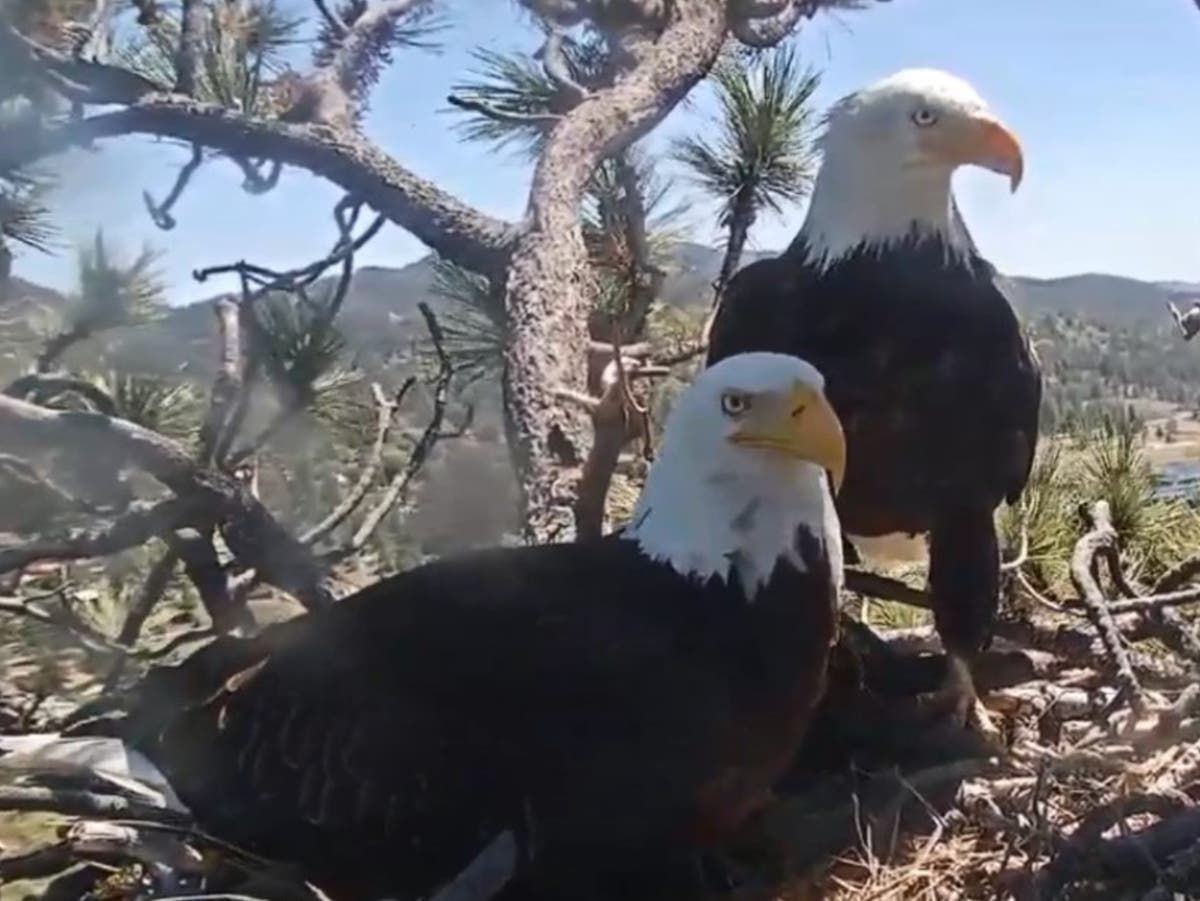Two California bald eagles are waiting for their chicks to hatch any day now.
Jackie and Shadow, a pair of bald eagles nested in a pine tree next to Big Bear Lake, California, have developed an online following since Sandy Steers, executive director of the nonprofit Friends of Big Bear Valley (FOBBV), installed a 24-hour eagle camera in 2015.
On the livestream, Jackie and Shadow can usually be seen taking turns sitting in their six-foot-wide nest, protecting their young from blizzards, freezing temperatures, and high-risk winds. Now, attention on Jackie and Shadow has reached a fever pitch with the news that they are expecting some chicks to hatch in the coming days.
While Jackie has laid several eggs over the past six years with Shadow, only two have survived, raising the stakes for the couple as bald eagles remain endangered in California.
Jackie has also laid an unprecedented three eggs during a single nesting period, and the bald eagles' 668,000 Facebook followers are on the edge of their seats waiting to see what happens. According to Steers, the Eagle livestream has become so popular because people connect with Jackie and Shadow. She explained to NBC: “It reminds them of their own life or something in their life, and they like to see that happen.”
Interested viewers can tune in to the feathered couple's charming and sweet antics via the nonprofit's YouTube and Facebook pages. Many users have taken to the comments section to add their observations and share their love for eagles.
As a biologist, Steers told the outlet that the couple “has emotional responses to things that are different than other times,” and there are simply emotions and reactions that are universally recognized. He added that he has seen “a shadow standing and looking at broken eggs and just standing there and it can't be anything but an emotion.”
Steers has been watching bald eagles since 2012 after learning from U.S. Forest Service rangers about a small eaglet that hatched in a nest in Big Bear. “I would stay there for hours every day, even in the snow, no matter what was going on, because I just wanted to see what happened,” Steers said. “This was all fascinating to me.”
The little eaglet that Steers watched day after day would end up being Jackie. Having watched her from a young age, Steers ended up installing the eagle camera to keep an eye on her and her burgeoning family.
According to the U.S. Fish and Wildlife Service, the bald eagle has been removed from the list of threatened and endangered species since August 8, 2007. However, the bald eagle remains endangered. in California and is classified as a “fully protected bird” under state law. law.
Bald eagles nationwide are protected by both the Migratory Bird Treaty Act and the Bald and Golden Eagle Protection Act, which prohibit killing, selling or otherwise harming eagles, their nests or eggs. However, the U.S. Fish and Wildlife Service recently revised a rule on permit regulations that allow the taking of eagles and eagle nests under the Bald and Golden Eagle Protection Act.
Bird populations have declined to dangerously low levels due to the widespread use of the toxic pesticide DDT in the decades after World War II. DDT caused anomalies in the shells of bald eagle eggs, compromising both the nesting and hatching processes, and causing population declines. Bald eagles have also faced upheavals related to human disturbance and modification of their habitat due to roads and housing, as well as threats from logging, electrocution and collisions with power lines, and hunting. .












